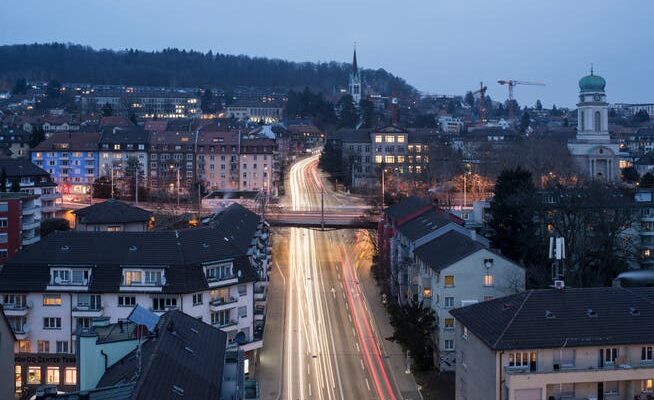For a few months, vehicles from the parcel delivery service DPD have been measuring the air quality in four Swiss cities. The first results show that the WHO limit values are often exceeded.
Particulate matter pollution is particularly high on busy city streets.
Particulate matter is one of the most common causes of death in the world. Estimates assume that four to eight million people die prematurely every year because of the microscopically small airborne particles. A recently published study shows that young children and the unborn child are severely affected by the negative effects.
Particulate matter pollution is particularly high in the big cities. This assumption is confirmed by measurements carried out by the parcel deliverer DPD carried out in Zurich, Basel, Bern and Geneva since September. The data is recorded by laser sensors mounted on around 100 delivery vehicles. The results are transmitted every twelve seconds. This shows that the exposure to smaller dust particles (PM 2.5, i.e. less than 2.5 microns in diameter) is particularly significant. The concentration of the carcinogenic fine dust component soot is also well above the recommended value in many places.
Accessible for everyone
Since the parcel service vehicles are on the road in practically every part of the city, real-time monitoring is created in this way. The data is publicly available so that anyone can quickly and easily find out what the air quality is like on their own doorstep, along their jogging route or on their children’s way to school. The program called “Breathe” by DPD is also running in Paris, Lisbon, London and Hamburg and has already made an impact there. The city of Lisbon has created an emission-free zone based on the detailed measurement data.
The measurement data evaluated so far for the four Swiss cities show that the daily average values rise rapidly in inversion weather conditions. Such layers are common in winter when the upper air layers are warmer than the lower ones. “This was the case before Christmas, for example, until the foehn cleared the heavily polluted air,” says project manager Ville Heimgartner. Due to the mobile measurement method, clear hotspots could also be identified. According to Heimgartner, these are in the city of Zurich, for example on Rosengartenstrasse.
Of course, it’s no coincidence that a company from the logistics industry takes air measurements. “It’s an image project for DPD,” says Michael Schlunegger. “After all, parcel deliverers are shot particularly badly because of their numerous trips in public.” Nevertheless, the managing director of the Zurich lungs (formerly the Zurich lungs league) welcomes the commitment. The mobile measurements complement the permanent stationary measurements that the city of Zurich carries out at the Stampfenbachstrasse, Schimmelstrasse, Heubeeribüel and Rosengartenstrasse locations.
Schlunegger hopes that the results of the mobile measurements will sensitize the population to the fact that there are differences between the limit values of the World Health Organization (WHO) and those of the Federal Office of Public Health. A limit value of 10 µm/m applies to PM 2.5 in Switzerland. However, the limit value recommended by the WHO has only been 5 µm/m since 2021.
High seasonal load
In addition to the annual mean, the seasonal peak load is also decisive. The WHO 24-hour limit for PM 2.5 is 15 µm/m. There is no 24-hour limit in Switzerland. “The mobile measurements could increase the pressure in politics to introduce the new limit values in Switzerland,” says Schlunegger. In the coming weeks, project manager Ville Heimgartner will meet those responsible for air quality in the four cities in which measurements will be taken.
DPD Switzerland, with its 1200 employees, does not only try to improve the air quality by making measurement results available. The express and parcel service provider is also gradually converting its delivery vans to electric vehicles. Around 14 percent of the 800 delivery vehicles are currently powered by electricity.
